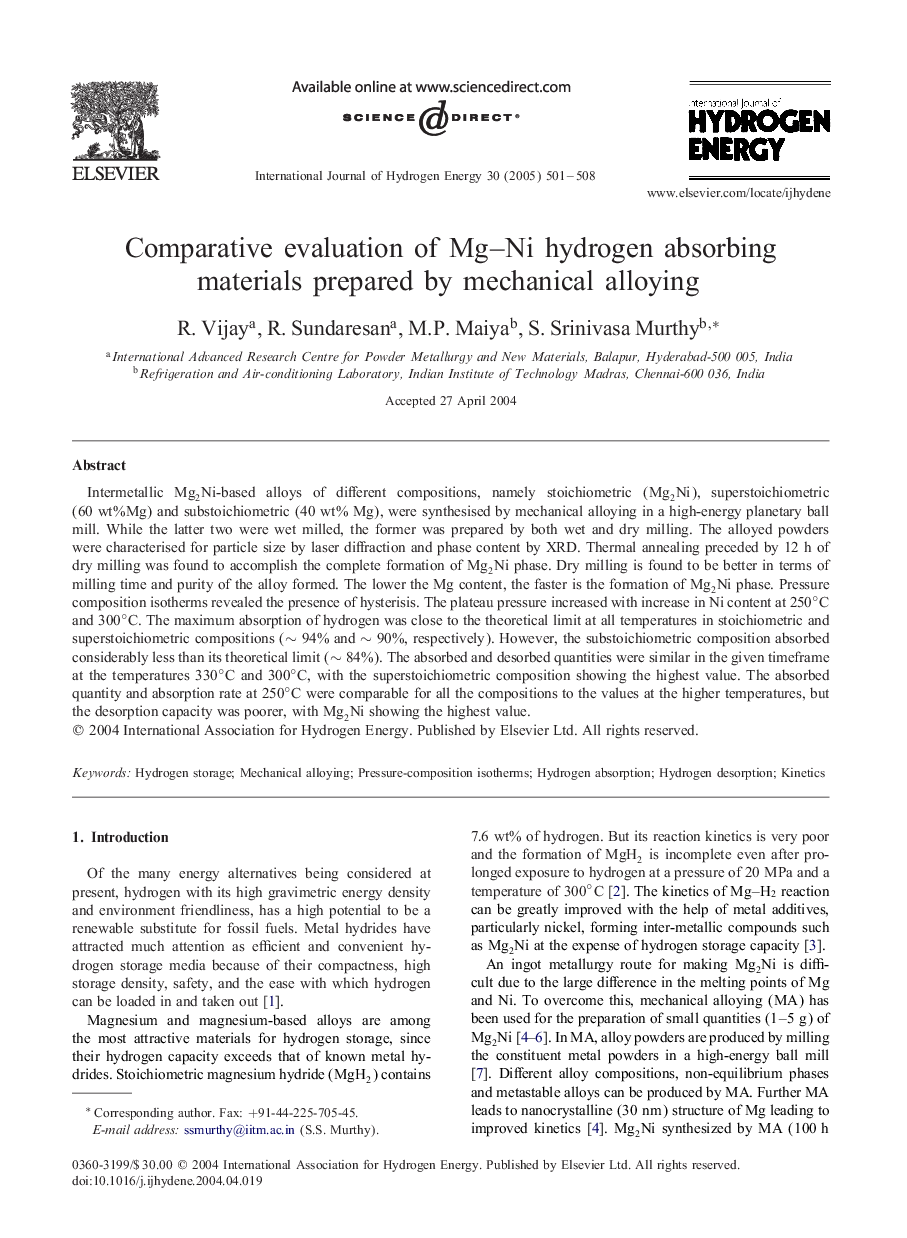| Article ID | Journal | Published Year | Pages | File Type |
|---|---|---|---|---|
| 9759319 | International Journal of Hydrogen Energy | 2005 | 8 Pages |
Abstract
Intermetallic Mg2Ni-based alloys of different compositions, namely stoichiometric (Mg2Ni), superstoichiometric (60wt%Mg) and substoichiometric (40wt% Mg), were synthesised by mechanical alloying in a high-energy planetary ball mill. While the latter two were wet milled, the former was prepared by both wet and dry milling. The alloyed powders were characterised for particle size by laser diffraction and phase content by XRD. Thermal annealing preceded by 12h of dry milling was found to accomplish the complete formation of Mg2Ni phase. Dry milling is found to be better in terms of milling time and purity of the alloy formed. The lower the Mg content, the faster is the formation of Mg2Ni phase. Pressure composition isotherms revealed the presence of hysterisis. The plateau pressure increased with increase in Ni content at 250°C and 300°C. The maximum absorption of hydrogen was close to the theoretical limit at all temperatures in stoichiometric and superstoichiometric compositions (â¼94% and â¼90%, respectively). However, the substoichiometric composition absorbed considerably less than its theoretical limit (â¼84%). The absorbed and desorbed quantities were similar in the given timeframe at the temperatures 330°C and 300°C, with the superstoichiometric composition showing the highest value. The absorbed quantity and absorption rate at 250°C were comparable for all the compositions to the values at the higher temperatures, but the desorption capacity was poorer, with Mg2Ni showing the highest value.
Keywords
Related Topics
Physical Sciences and Engineering
Chemistry
Electrochemistry
Authors
R. Vijay, R. Sundaresan, M.P. Maiya, S.Srinivasa Murthy,
